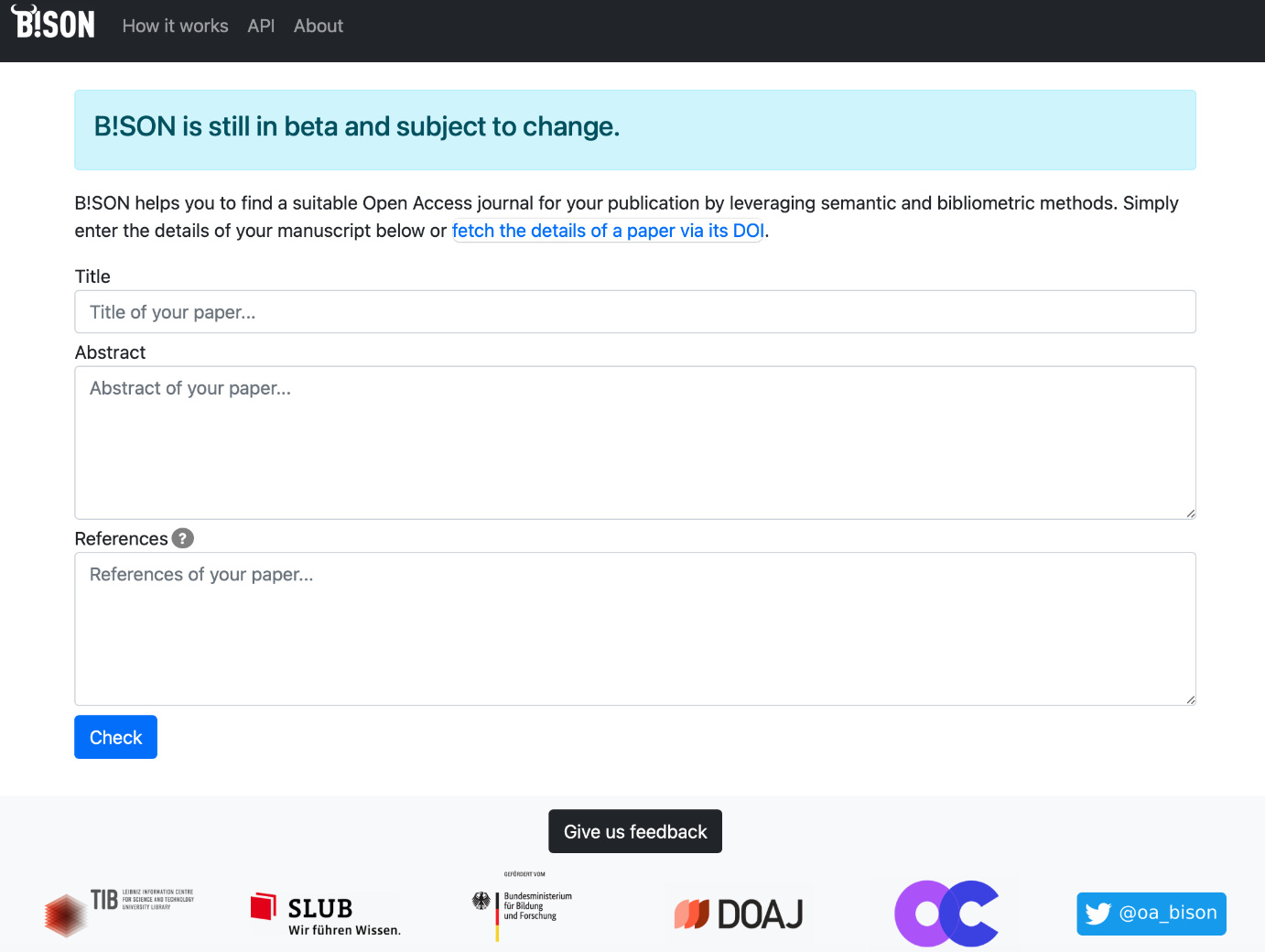Curtains for B!SON beta!
It’s finally here, one year after the start of the project: the beta version of B!SON. The new recommendation system for thematically relevant, quality-assured Open Access journals is easy to use: the title, abstract and references of a manuscript can be entered with copy & paste. Then, in a matter of seconds, B!SON will suggest a list of suitable Open Access journals that can serve as a decision-making aid for authors. The recommendations can be filtered, compared in tabular form and exported. There is also a profile page with further information for each journal. B!SON gives recommendations based on textual similarity in title and abstract or bibliometric similarity based on the cited literature. By providing a score for each recommended journal, it is possible to trace exactly where the correspondence between the input data and the recommended journal is.

What has happened so far – and what we still plan to do
There was a lot on our agenda before we were able to go public with B!SON beta: we discussed the requirements with the institutions supporting the project and analyzed and prepared the database (the article and journal data of the Directory of Open Access Journals and the COCI citation database from OpenCitations). Furthermore, we evaluated various methods of determining similarity and of course developed the recommendation algorithm itself, the web interface and the API of the recommendation system.
Parallel to the current beta phase, in which we evaluate and implement the feedback we are receiving, we are developing further functionalities and making them available successively. For example, we will refine the procedure for determining similarity based on the references. The tool will be available in early 2023 as a productive version that can be used free of charge. In addition, the source code is then openly available for further development.
How B!SON determines the recommendations – and what is behind the „score“
The entries in the title, abstract and references fields are each analyzed separately to determine matching, similar articles from the DOAJ dataset:
To calculate the text similarity (based on title and abstract), stop words are removed in the first step – i.e. frequently occurring words without relevance to the content, such as „the“, „which“ or „and“ in English. The degree of text correspondence is then determined using the Okapi BM 25 ranking method. This algorithm checks whether the same words appear in the texts and also takes into account the significance of the words based on their frequency. A rare, medical term would then have a higher meaning than a generic word like „method“.
Finally, a numerical score is calculated that summarizes the similarity of the entered data to the information from the existing journal publications.
To determine the similarity of the references, the DOIs (digital object identifiers) are first extracted from the input. The COCI data set, an open resource for citation data, is then used to check which articles from the DOAJ cite the entered DOIs. If an article cites a (dynamically calculated) minimum number of entered DOIs, a score is also calculated here. Finally, the previously determined articles are assigned to their journal and the overall score is formed.
The functionality of the recommendation algorithm will be adjusted as the project progresses. The current description of how it works can be found on the B!SON website.
Feedback welcome!
It doesn’t matter whether you have little or extensive experience with scientific publishing, whether you conduct interdisciplinary or fundamental research – we look forward to your feedback on the beta version of B!SON. We also welcome feedback from academic libraries that are active in publication support (regardless of whether they are intensive or sporadic) and of course from the Open Access community.
Have fun trying out B!SON beta – feedback is welcome directly to bison@tib.eu!
BISON is being developed as part of a BMBF-funded project by a team made up of employees from the TIB – the publication services department and the Visual Analytics research group – and the SLUB Dresden. More information can be found on the project website.
... ist Mitarbeiterin im Bereich Publikationsdienste der TIB und dort im Projekt B!SON tätig.
... arbeitet als Software-Entwickler in der Forschungsgruppe Visual Analytics der TIB

